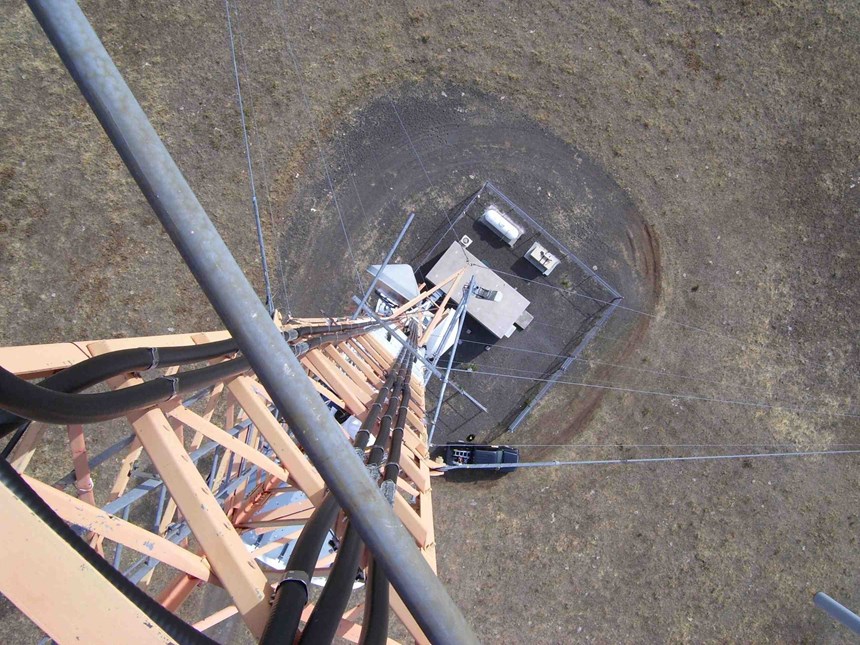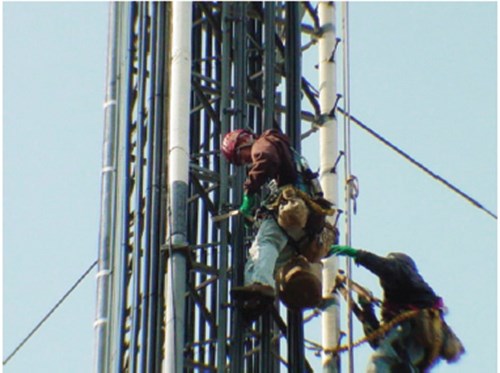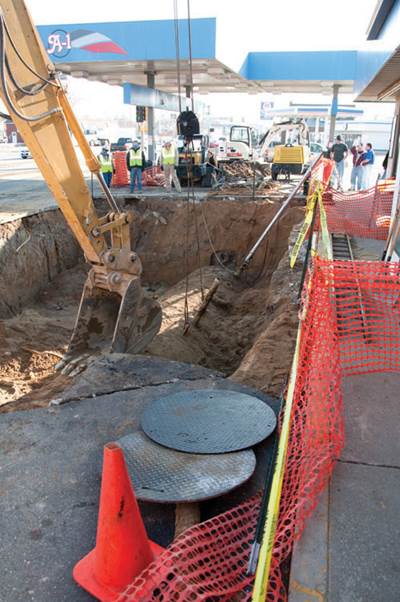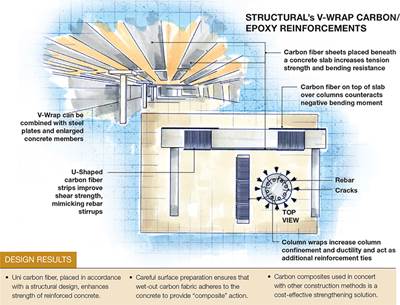Materials & Processes: Composites for repair
Composites offer cost-effective means to repair, protect and/or strengthen structures made of steel, concrete or other materials.
Composites are increasingly being used to repair structures built with other materials. Target applications include bridge beams, bridge decks, parking garages and pipelines, including underground systems. A number of specialty contractors, such as Structural (Hanover, Md., a Structural Group company) and Fyfe Co. LLC (San Diego, CA, US), use onsite-impregnated composite fabrics and precured reinforcement strips to add load capacity and strength to concrete floors and beams.
Steel-reinforced concrete can be damaged by seismic events and is commonly compromised by temperature-induced contraction and expansion. This results in cracks, which permit moisture invasion, results in corrosion and spalling (expansion) of the steel rebar. That, in turn, aggravates cracking and leads, eventually, to concrete disintegration followed by structural failure. Composites are increasingly used to repair such structures at significantly less cost than new construction, and also to rehabilitate structures that must bear increasing loads beyond the structure’s rated capacity.
According to Jay Thomas, VP of strengthening solutions at Structural, more than1.85 million m2 of carbon fiber composites already have been installed in reinforced concrete buildings in the U.S. alone. Structural’s carbon fiber/epoxy V-Wrap material is one solution of several available solutions, made with a unidirectional fabric of intermediate-modulus carbon fibers, which becomes an integral part of a concrete member via bonding with epoxy resin. The ease and speed of application of such systems compared to using traditional materials often helps reduce overall project costs, and in some cases, even makes an otherwise unworkable project possible (read more about such composites repair and rehab opportunities by clicking “Carbon fiber: Key to cost-conscious rehab”).
One example, applied to steel structures, is the composite repair designed by Comptek Structural Composites Inc. (Boulder, CO, US) and its Boulder-based subsidiary Aero Solutions LLC for the 54m tall KHON television broadcasting tower, mounted atop a 42-story building in downtown Honolulu, HI, US. The badly corroded steel monopole had been condemned and revised building codes prevented construction of a replacement on the building. Composite repair provided the only practical solution. The repair featured unidirectional carbon fiber, aligned parallel to the tower axis and carefully bonded to the entire outer surface, followed by outer hoop wraps of uni carbon over 40% of its surface, to ensure structural integrity. A cement-based grout injection followed, to provide additional stiffness to the monopole. Once stabilized, the tower was wrapped with Comptek’s water-activated polyurethane prepreg as an outer weather-tight layer. (Read more by clicking “Composites the clear choice in telecom tower rehabs”.)
Composites also can be used to repair product pipelines, such as natural gas and petroleum pipes at oil refineries and offshore platforms. One example is Henkel’s (Düsseldorf, Germany) Loctite Composite Repair System for steel pipes and pipelines, which has been certified by DNV GL to the global quality standard ISO/TS 24817. Thus, the system is qualified for repairing oil and gas pipelines and pipework that carry petrochemicals.
Continuous exposure of a pipe’s internal and external surfaces to corrosive attack from weather, mechanical stress and chemicals makes it necessary for pipeline operators to regularly deal with cracks, holes, fractures and leaks. The Loctite repair system includes a corrosion inhibitor, surface filler and high-strength glass/carbon fiber tape that is pre-impregnated with temperature-resistant epoxy resin. The resin is reportedly engineered specifically for bonding to steel substrates. The repaired section is then sealed with a sprayable ceramic topcoat. Corroded pipes — including not only straight sections, but bends, tees, reducers and flanges — can be repaired in situ, without any interruption in operations — even in situations where pipes are subject to high internal operating pressures. Thus, operators can carry out repairs but avoid work stoppages and resulting commercial losses. Moreover, the quality of the repair is such that it can increase the useful life of steel pipelines by up to 20 years. (Read more by clicking “Certified composite repair for steel pipes and pipelines.”)
Composites also are used to rehabilitate underground storage tanks without the time and expense of excavation. A number of companies provide internal tank lining services, using various fiberglass products to meet the requirements for double-walled tanks and interstitial monitoring now in place. (For example, click on “Underground storage tanks: Rehabilitation without excavation.”)
Related Content
Materials & Processes: Composites fibers and resins
Compared to legacy materials like steel, aluminum, iron and titanium, composites are still coming of age, and only just now are being better understood by design and manufacturing engineers. However, composites’ physical properties — combined with unbeatable light weight — make them undeniably attractive.
Read MoreComposites end markets: Automotive (2023)
Electrification and a focus on sustainability lead to opportunities and innovations in composites, from battery enclosures to structural components and more.
Read MoreMaterials & Processes: Fabrication methods
There are numerous methods for fabricating composite components. Selection of a method for a particular part, therefore, will depend on the materials, the part design and end-use or application. Here's a guide to selection.
Read MoreComposites end markets: Aerospace (2023)
With COVID in the past and passengers flying again, commercial aircraft production is ramping up. The aerocomposites supply chain is busy developing new M&P for an approaching next-generation aircraft program.
Read MoreRead Next
Underground storage tanks: Rehabilitation without excavation
An unusual “lost-core” composite adds double walls protection to noncompliant tanks without excavation.
Read MoreComposites the clear choice in telecom tower rehabs
Tower permit difficulties spur repairs/upgrades of aging steel structures.
Read MoreCarbon fiber: Key to cost-conscious rehab
Carbon composites are effective solutions for repairs and upgrades of reinforced concrete.
Read More




























